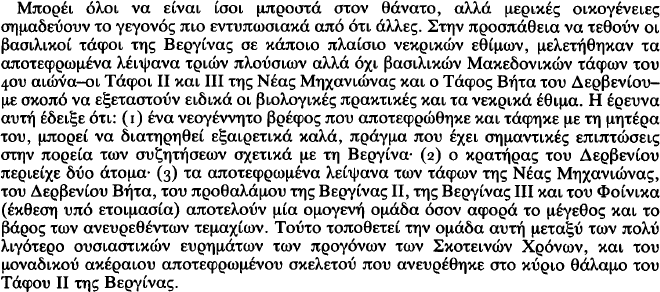Article contents
The Cremated Remains From Tombs II and III at Nea Mihaniona and Tomb Beta At Derveni
Published online by Cambridge University Press: 27 September 2013
Abstract
Death may be the great leveller, but some families can mark the event more spectacularly than others. In an attempt to set the royal burials at Vergina into some form of mortuary context, the cremated remains from three rich, non-royal 4th-century Macedonian tombs – Nea Mihaniona II and III and Derveni Beta – were studied with an eye on both biology and mortuary practices. This investigation showed that: (i) a neonate cremated and buried with its mother can survive both events remarkably well, with important consequences for the Vergina debate; (ii) the Derveni crater contained two individuals; (iii) the Nea Mihaniona, Derveni Beta, Vergina II antechamber, Vergina III and Phoinikas (report in preparation) cremations form a homogeneous group in terms of fragment size and weight. This sets them midway between (a) their far less substantial Dark Age forebears and (b) the unique whole cremated skeleton from the main chamber of Vergina Tomb II.

- Type
- Articles
- Information
- Copyright
- Copyright © The Council, British School at Athens 1990
References
Bibliography and Abbreviations
- 1
- Cited by




